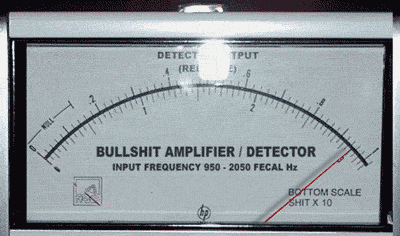Book authors, trade journal reporters, consulting firms, and influential bloggers can fill marketing teams’ heads with some really bad ideas. As these stories reverberate around the echo chamber, they seem to confirm each other and voila, a wrong belief becomes entrenched. Examples: pundits’ predictions 5-10 years ago about TV’s demise were wrong. Current scare tactics about showrooming appear equally flawed.
Usually, this starts with a bad marketing research mistake turned into a compelling narrative. The two classes of marketing research mistakes I want to focus on here are:
- Confusing incidence with market share
- Asking questions that people cannot answer
Confusing incidence with market share
The incidence of people who ever engage in a disruptive activity can really scare marketers. For example, it appeared that TV will soon be dying when you looked at the percent of people who watch video online or watch timeshifted TV on their DVR and presumably fast forward through commercials. However, when you look at SHARE of viewing minutes, you get a completely different story. From a Nielsen cross platform report in Q1, 2011, we see that the incidence of watching shows on a timeshifted basis was about a third of TV viewers but it only accounted for 6% of viewing minutes. About half of people watched video on the internet but it accounted for less that 5% of minutes. As with food, light snacks rarely replace full meals.
Now let’s turn to an issue getting lots of press these days, showrooming. This is the phenomenon that people walk into a Best Buy or Walmart, for example, see what they want to buy but then actually buy it from another online retailer via their mobile app, often via Amazon. This is so scary that Best Buy is even creating new store formats to combat this. A study by comScore in April 2012 shows that 35% of respondents claim they have showroomed. However, how MUCH are they doing this? A joint study by IDC and Onavo (who has a metering solution for app usage) reports that key price comparison shopping apps are only used by 1-3% of iPhone users an average of 2 times per month. A study reported on in Mediapost adds that about half of showrooming leads to purchases in that same retailer physically or online. Incidence of showrooming? Scary! Share of purchases diverted by showrooming? Still really low single digits.
Asking questions people cannot answer
Recently I was reading the revised edition of “Eating the Big Fish” (Morgan, Adam; 2009-04-03), a highly regarded marketing book but I was quite disappointed with the bad survey data it used as the setup for the book’s recommendations.
- Survey study by Yahoo and OMD in 2006 showed people spend 2 ½ hours per day on TV but 3.6 hours/day on the internet.
- The only problem is that these data bear no resemblance to reality. Nielsen is the gold standard for TV viewing measurement and people actually watch about 5 hours per day of TV and access the internet a fraction of that time.
- Annoyance with TV Advertising is increasing.
- This is a bad question. Are movie trailers annoying which are really just long commercials? I bet not. Does this mean the effectiveness of TV advertising is declining at driving sales? Not from the analysis I did in 2009 of 388 commercials ROI assessments. In fact, that study was the basis of Dave Poltrack (Chief Research Officer at CBS calling Forrester’s predictions bullsh*t at an ANA conference. Please read the article and listen to the soundbite.
One of the worst marketing research abuses I have seen, supporting that a tsunami of showrooming was coming, was reported on in Mediapost where the study asked consumers about retailing practices they expect to see by 2020. Really? People are concerned about stretching their food dollars to the next paycheck and marketers are abdicating their responsibilities for directing a company’s future by just asking consumers straight out about showrooming in 2020? See how one bad story can reinforce the other in the echo chamber?
This blog is not an indictment of marketing research. In fact, it is the opposite; it is a statement of the importance of basing marketing beliefs on grounded insights from marketing research executed in a world class way. Let us shift marketing research back to the professionals and let’s not break some simple rules.


[…] discovered an excellent blog post (link here) this week about marketers being mis-led by major research mistakes. One of his main examples? […]
This is the exact reason why I take a lot of research with a pinch of salt
I understand your sentiment. But I don’t think that’s the right conclusion to draw.
Because when you do meaningful research and interpret it carefully there is tremendous power that comes from what is found. It shows in the higher revenues you can drive. And it shows by avoiding investments that are bad.
What’s tough seems to be finding those researchers who thoroughly understand this and gaining the trust to know when/how to rely in their work.